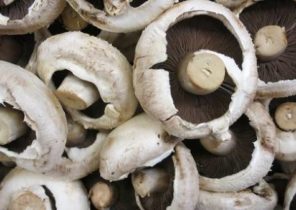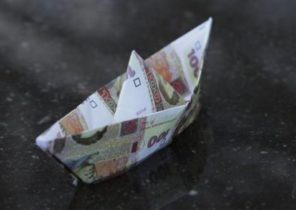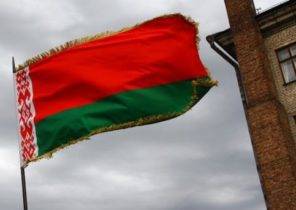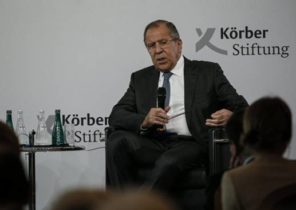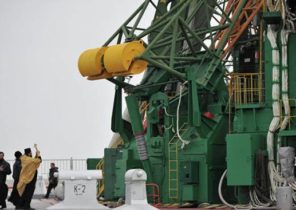
The volume of foreign trade of the Eurasian economic Union (EEU) with States that are not members of the unit, is significantly reduced for the second consecutive year, noted in the last report of the regulatory body of the EAEU, the Eurasian economic Commission.
The start of work EAEC — agreement on its establishment entered into force on 1 January 2015 — coincided with a difficult economic period for the participating countries, including the fall in world commodity prices that has led to a decline of foreign trade turnover.
Export and import of the EAEU
The volume of foreign trade of the EEU with the third countries in 9 months of 2016 decreased by 17.2% to 361,7 billion compared to the same period of the previous year. In particular, exports decreased by 23.5% to 218,5 billion, and imports by 5.3% to 143,2 billion dollars.
Thus, in large measure, remained sharply manifested in the previous year, the trend fall in foreign trade turnover of the countries of the bloc. For the full year 2015 compared to the figures of 2014 the volume of foreign trade participants of the EEU with the third countries has fallen by 33.6% to 579,5 billion dollars.
“The main exports of the countries of the EEU, — raw materials and products of primary processing. Most of the contracts for the supply of these goods involves binding to the stock exchange prices with the time shift from 6 to 9 months. Because in 2015 there was a strong decline in commodity prices, “echo” this decline was reflected in this year’s volume of trade with countries outside the EEU,” — said the adviser on macroeconomics General Director of investment company “Opening Broker” Sergey hestanov.
A significant proportion of exports of the EEC in the third quarter of 2016 accounted for by mineral products (60.9% of total exports or 133,1 billion). Compared to the same period of 2015 delivery has decreased us $ 30.7 percent. The basis of the mineral products for export were mostly “mineral fuels, mineral oils and products of their distillation; bituminous substances; mineral waxes”. For the first 9 months of 2016 they were sold for 130.6 signatures a billion dollars. In addition, EAEC exports iron ore, slag, ash, salt, sulphur, earth, plastering materials, lime and cement. But their volumes are insignificant compared to oil and gas products — only $ 2.5 billion.
Such a strong decrease of mineral products is largely due to reduced exports of energy products from Russia. In the framework of the Union is 84% of the volume of exports of goods (outside of EEU) 83.9% of imports of the Russian Federation.
Thus, according to the Federal customs service of Russia, the share of fuel and energy goods in Russian exports over the past two years has decreased in value from 74.8% (1 Oct 2014) to 62.3% (1 October 2016). In 9 months of 2016, compared to the same period in 2015, the value of this category fell by 29.6%. While the physical volume of fuel and energy exports over the past two years: Russia recently has the post-Soviet — and even the Soviet records on the production and export of oil and gas.
The second place by volumes in the export structure of the EEC in third countries is “metals and their products” (10.7% of total exports or USD 24.3 billion). They also showed a drop in dollars compared to the same period in 2015 by 15.6%.
Third place is taken by products of chemical industry (6,4% or 11.4 billion), exports of which decreased by 28.5% in monetary terms.
In imports, the top three categories also remained unchanged compared to 2015, but the volume decreased. It machines, equipment and means of transport (42.6% of total imports, or $ 61 billion), chemical products (18,7% or 18.4 billion), food products and agricultural raw materials (13%, or 18.6 billion dollars).
In General, the three quarter of 2016, the EEU has reduced imports by 5.3% compared to the same period of the previous year. In particular, the volume of import of Armenia and Russia decreased by 2.8%, Belarus — by 10.5%, Kazakhstan — by 25.5%, and only Kyrgyzstan has increased the import of goods is 19%.
Promising directions
Amid the General collapse of revenues from exporting a small growth showed some kinds of food products and agricultural raw materials, as well as certain positions in the chemicals industry. And although the money they made up a small share of total exported goods — about 6% — but, at least, showed a positive trend.
For example, in 9 months of 2016 export of meat and edible meat offal in dollar terms increased by 3.1 times compared to the same period in 2015; sugar and confectionery products — by 40%; vegetables 31%, dairy products, eggs, honey 27%; coffee, tea, spices — by 21.5%.
Live animals were exported, 3.7% more than the year before; fish, crustaceans, molluscs — by 2.5%; fruits, seeds, medicinal plants — 7%.
“In the case of foodstuffs, support for exports has had a significant simplification of relevant administrative procedures contractee (local producers have increased their market share and raise prices in rubles, that have received resources for investment), and active government support,” said financial analyst group of companies “FINAM” Timur Nigmatullin.
With regard to chemical products and related industries, in General, this category showed a decline, however, some items showed a good growth. Thus, in particular, pharmaceutical products were exported 10.7% higher than a year earlier; essential oils, toilet waters, 18%; photo and minotouro (also accounted for in chemical industry) — 14%.
The experts say that to expect major changes in export-import operations of the EEU is not worth it. “The export structure of any country is conservative, and changes very slowly. As a rule, a significant change requires at least 10-15 years”, — said Sergey hestanov.
